If you're concerned about your sugar intake, it's not without merit—after all, most Americans consume too much sugar. The average U.S. adult's added sugar intake is 17 teaspoons (68 grams), exceeding the recommendation of 12 teaspoons set by the Dietary Guidelines for Americans.
Added and natural sugar are often lumped together when discussing nutrition, but that doesn't tell the whole story. Although the body metabolizes both added and natural sugar the same, the health effects of each are vastly different. Natural sugar in fruit contains vitamins, minerals, antioxidants, water, and fiber—all nutrients supporting health.
Research shows that people who regularly eat fruit have a reduced risk of certain health conditions such as heart disease and type 2 diabetes.
The adage "an apple a day keeps the doctor away" may ring true. To maintain health, consider increasing your fruit intake. After learning about these low-sugar fruits, you'll be ready to add them to your daily food routine. And if you're trying to incorporate more fruit while monitoring blood sugar, these low-sugar fruits are a great place to start.
Grapefruit
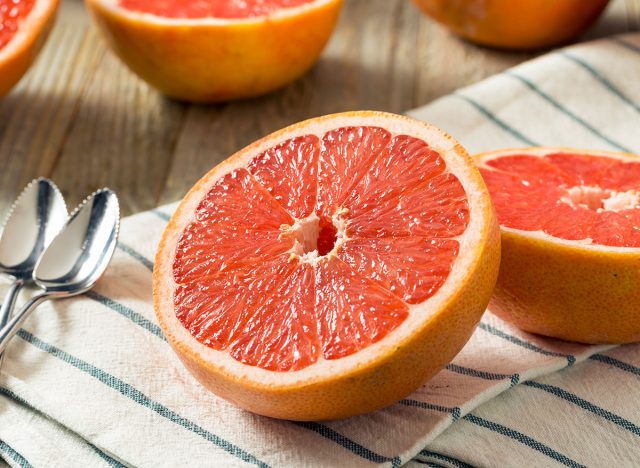
Sugar per 1/2 grapefruit serving: 10 grams
Grapefruit is a subtropical citrus fruit loaded with nutrients. According to a study in Advances in Nutrition, grapefruit is a potent source of naringin, a polyphenol linked to reduced blood pressure and insulin resistance (the underlying cause of type 2 diabetes).
Additionally, a half-serving grapefruit contains 13% of your daily vitamin A. Vitamin A is essential for health. It supports healthy vision and immune function, helps form collagen, and promotes bone strength. Because vitamin A can be toxic in high amounts, supplementation is not recommended unless under medical supervision. Regularly consuming grapefruit ensures you're getting enough vitamin A.
Blackberries
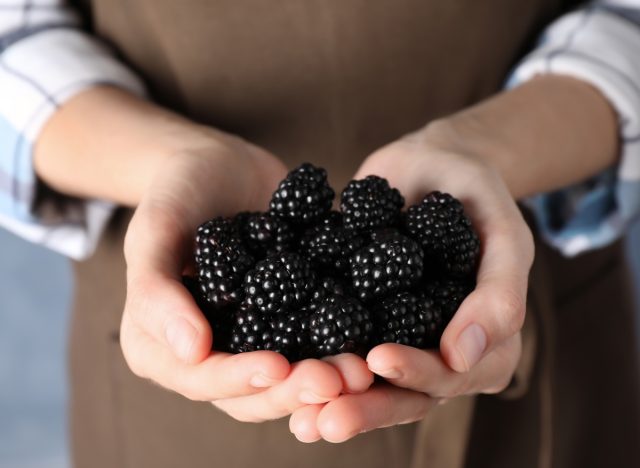
Sugar per 1 cup serving: 7 grams
Blackberries are rich in anthocyanins, a polyphenol responsible for red, blue, and purple hues. Research suggests berry anthocyanins positively influence pathways involved in blood glucose regulation.
A 2018 randomized controlled trial observed increased fat oxidation and improved glucose control among overweight or obese men fed a high-fat diet with 600 grams (4 cups) of blackberries daily for one week compared to those given a calorie and carbohydrate-matched amount of gelatin. Specifically, the men given blackberries demonstrated greater insulin sensitivity, an essential factor for preventing type 2 diabetes.
Strawberries
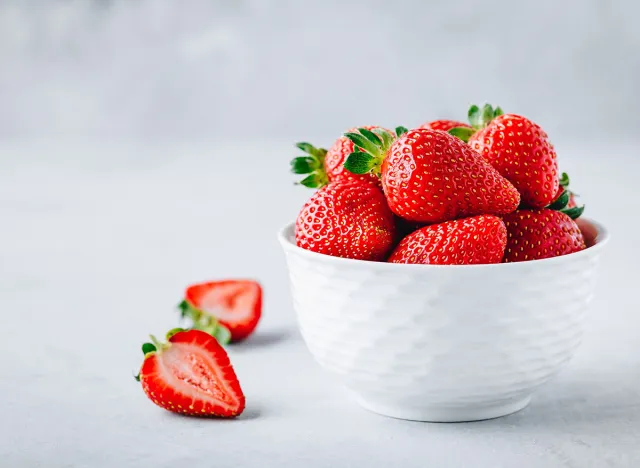
Sugar per 1 cup serving: 7 grams
Besides their low sugar, nutrients in strawberries are associated with improvements in cardiovascular risk factors. Polyphenols, fiber, vitamins, and minerals contribute to strawberries' heart-healthy benefits. Research presented in the British Journal of Nutrition shows that strawberries reduce c-reactive protein levels (an inflammatory marker) and lower low-density lipoprotein and total cholesterol in people with elevated cholesterol. Another 2019 meta-analysis suggests that eating 10–454 grams of strawberries (one medium strawberry to 2 3/4 of a cup of strawberries) reduces risk factors associated with heart health.
Kiwi
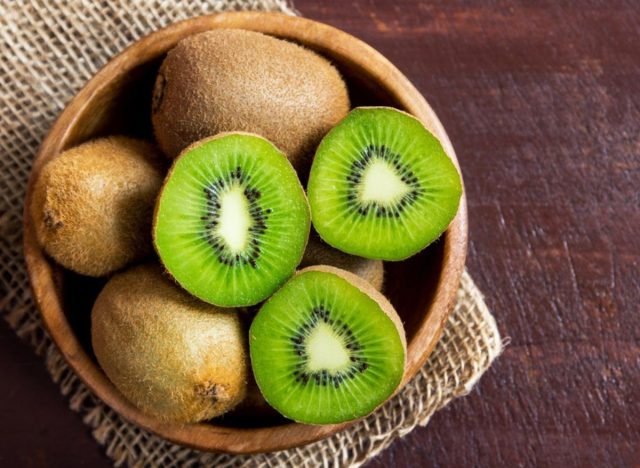
Sugar per 1 medium kiwi serving: 6 grams
Besides its low sugar content, kiwi is packed with other beneficial nutrients.
Extensive research supports kiwis for managing constipation because of their soluble and insoluble fiber content. Soluble and insoluble fibers soften and add bulk to stool, making it easier to pass. A 2010 study found that eating two kiwis daily for four weeks increased the frequency of bowel movements in healthy adults and those with constipation-dominant irritable bowel disease, or IBS. A 2022 meta-analysis observed similar results with kiwifruit but also noted improvements in IBS-related symptoms like abdominal pain and straining.
Guava

Sugar per 1 small guava serving: 5 grams
Guava packs a significant amount of vitamin C—more than four times that of oranges. Vitamin C is a potent antioxidant often sought to alleviate the common cold. A 2023 meta-analysis in BMC Public Health found that consuming 1 gram daily of vitamin C reduced the duration of severe cold symptoms. One small guava contains 125 mg of vitamin C, so you would need to eat eight guavas to reach the recommended amount. Still, guava's antioxidant and vitamin content can reduce a cold's symptoms and duration.
Raspberries
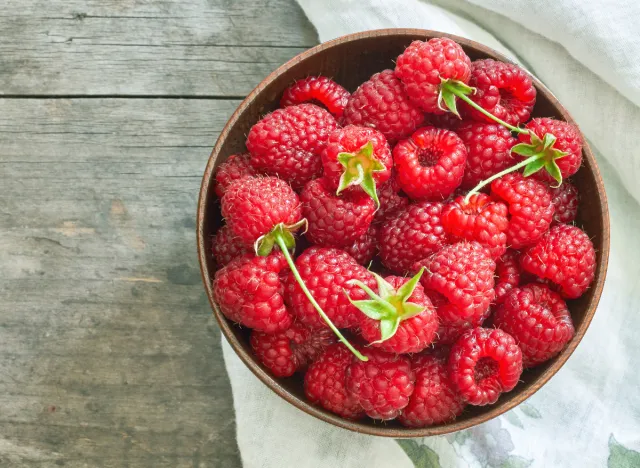
Sugar per 1 cup serving: 5 grams
Raspberries are a rich source of fiber and polyphenols, food components that influence the body's absorption of sugar and the development of chronic diseases.
Research indicates eating raspberries with a meal reduces postprandial blood sugar in people with prediabetes or diabetes. Moreover, a 2019 study published in the Annals of Nutrition and Metabolism observed that a mid-afternoon raspberry snack reduced inflammation, a key contributor to the onset of chronic conditions like type 2 diabetes.
Apricots
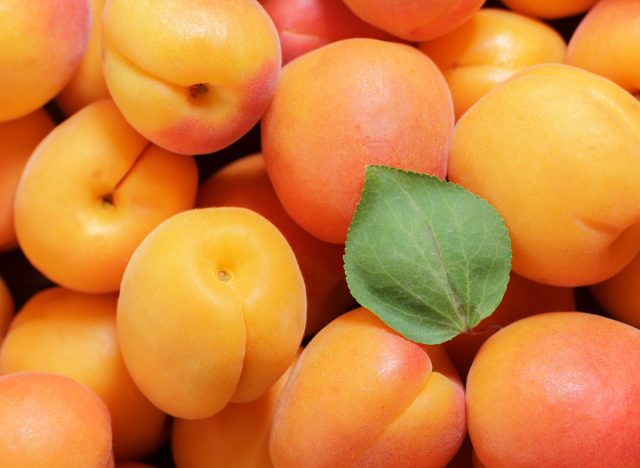
Sugar per 1 medium apricot serving: 3 grams
Drinking water is not the only way to stay hydrated; eating fruit with a high water content also contributes to hydration. Apricots are roughly 86% water, making them nutritious and hydrating.
Maintaining hydration is essential for health. Hydration lubricates and protects joints and tissues, removes waste from the body, and helps regulate body temperature. Dehydration is associated with health conditions such as gastrointestinal disorders.
Tomatoes
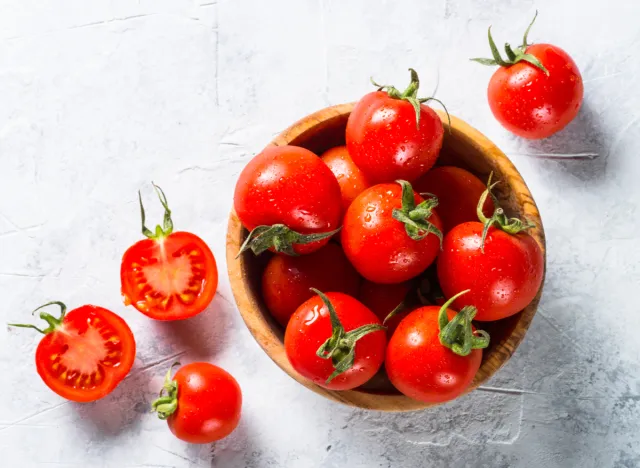
Sugar per 1 medium tomato serving: 3 grams
Although often considered a vegetable, tomatoes are, in fact, fruits. Lycopene is a carotenoid that provides tomatoes with their orange and red color. One medium tomato provides 3 milligrams of lycopene.
Lycopene from tomatoes acts as an antioxidant to protect cells from damage. Specifically, lycopene decreases the risk of prostate cancer. According to one review, eating 200 grams of tomatoes weekly (about two medium tomatoes) decreases the risk of prostate cancer by 13%. Consuming 1,000 grams of tomatoes (roughly nine to 10 medium tomatoes) weekly reduces prostate cancer risk by 46%.
Lemons

Sugar per 1 medium lemon serving: 2 grams
Lemons may be too tart to eat by themselves, but squeezing lemon juice into water can provide health benefits.
Lemons abound with flavonoids, natural compounds with beneficial health effects. Flavonoids influence many aspects of metabolism, namely how the body regulates glucose and fat. Moreover, flavonoids protect against cell damage implicated in chronic diseases. A review in the journal Nutrients reveals flavonoids may play a vital role in diabetes by attenuating inflammation and damage from persistently elevated blood sugar.
Avocado
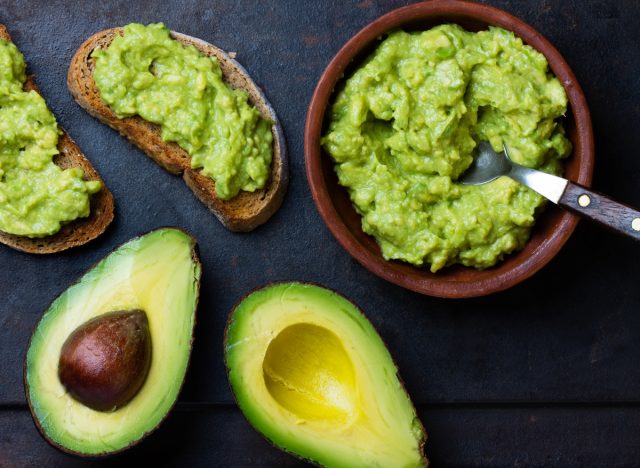
Sugar per 1 medium avocado serving: less than 1 gram
Avocados develop from flowering plants, so they are considered fruits.
A 2018 review in the journal Nutrients highlighted the weight control benefits of avocados, sharing that eating one avocado daily reduced body weight and body mass index (BMI). A 2013 study observed a 23% increase in satisfaction over five hours when participants consumed half an avocado with lunch. This satisfaction carried over to dinner, where participants who had avocado at lunch consumed less food. Another benefit of avocados: Substituting saturated fats with avocados reduces triglyceride, low-density lipoproteins, and total cholesterol, according to one meta-analysis.
Adding fruit to your diet provides a slew of benefits, from supporting gut health and reducing cold symptoms to weight management. Reap fruit's nutritional benefits while managing blood sugar with these 10 options.
No comments:
Post a Comment